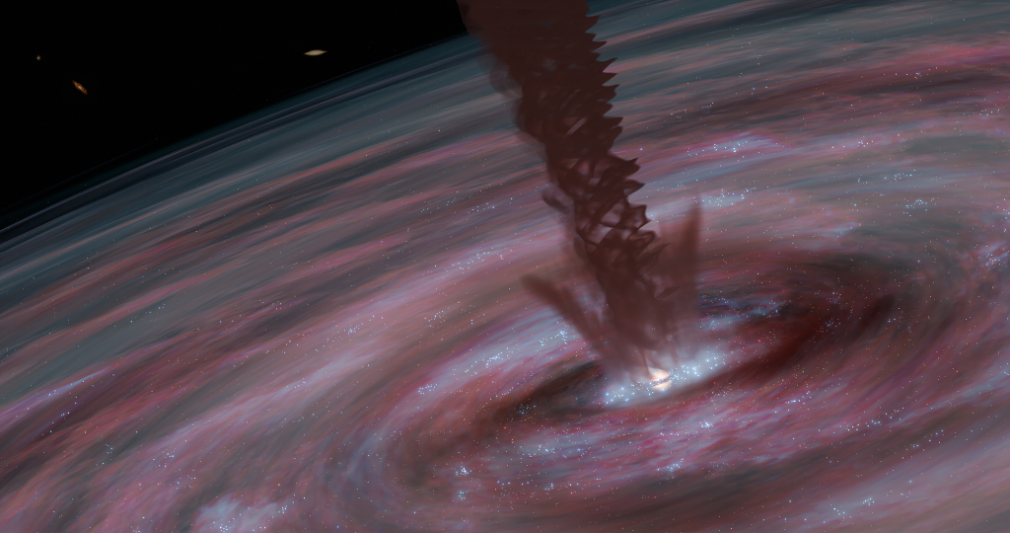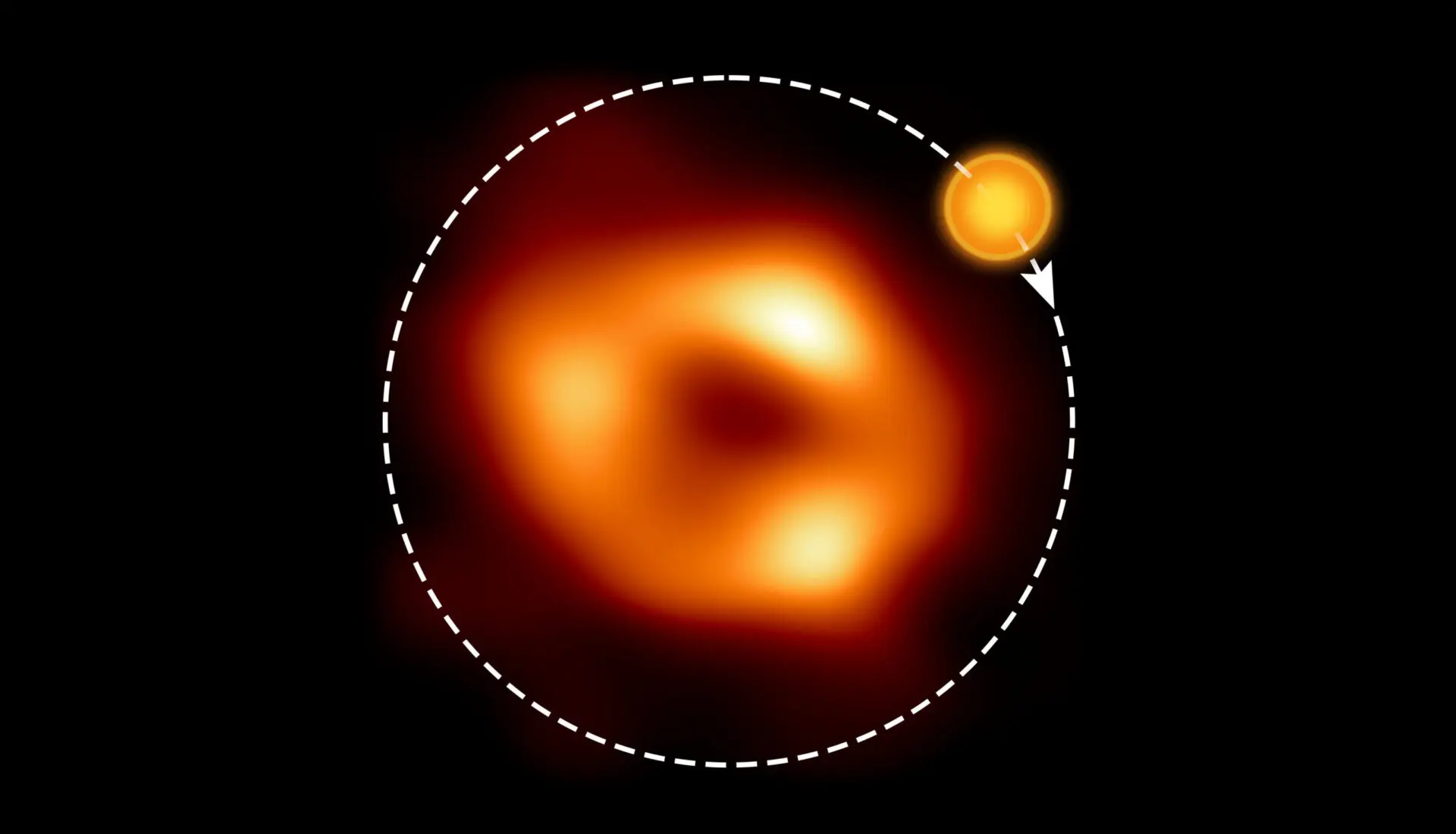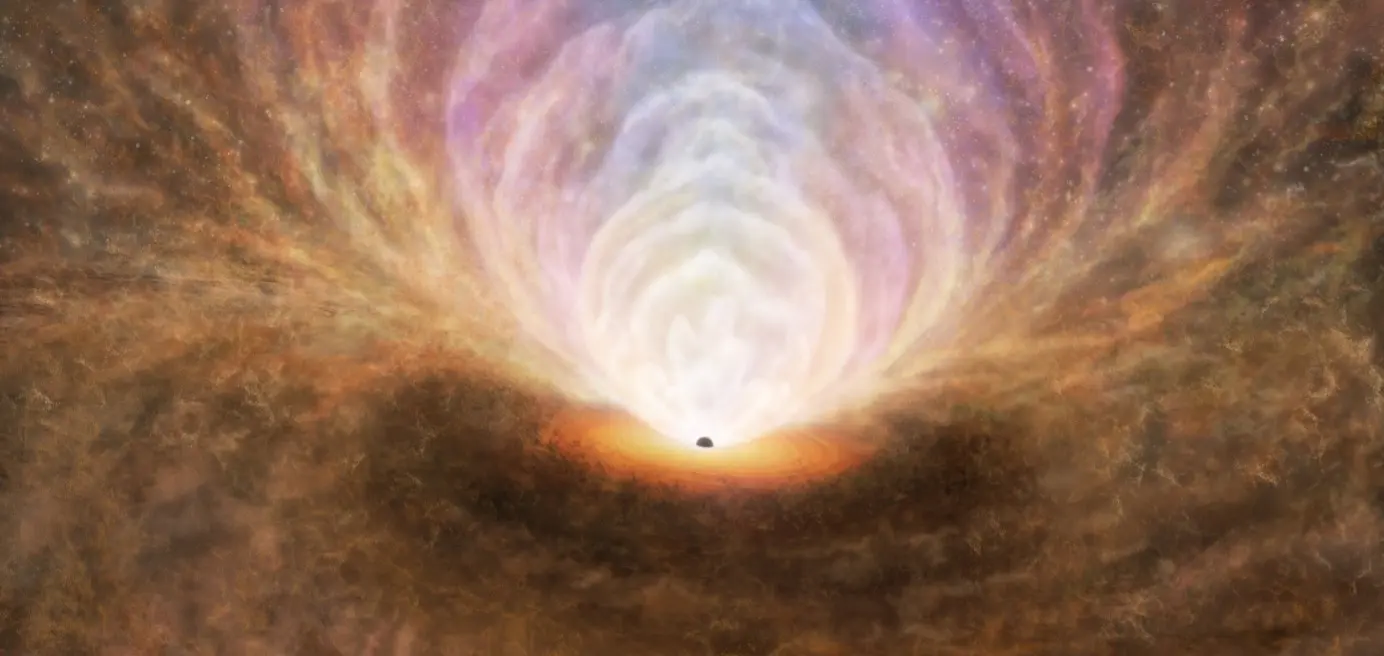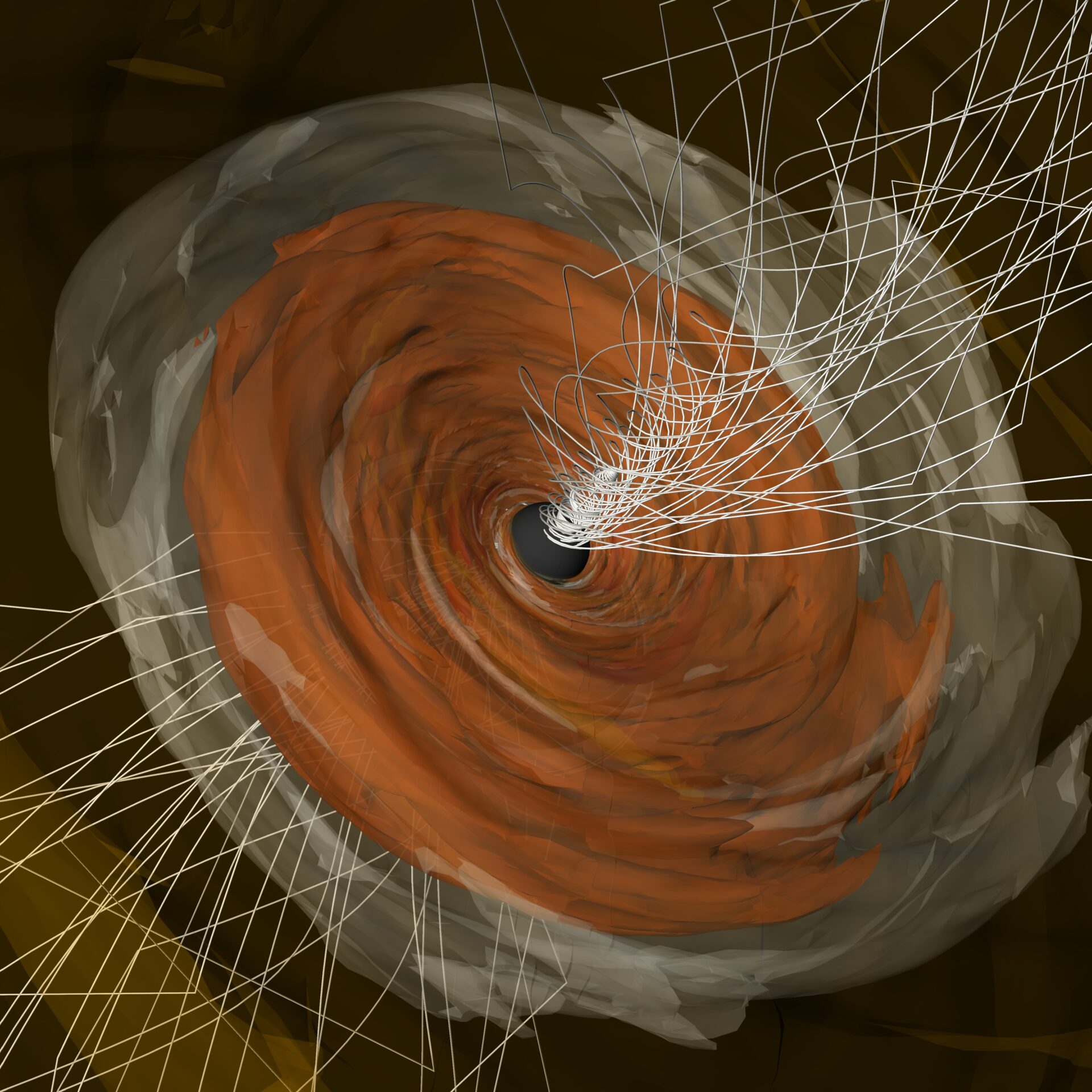Supermassive Black Hole Appears to Grow Like a Baby Star
How do supermassive black holes get so big? An international team of astronomers, including scientists at the U.S. National Science Foundation National Radio Astronomy Observatory (NSF NRAO) have discovered a powerful, rotating, magnetic wind that they believe is helping a galaxy’s central supermassive black hole to grow.
Most galaxies, including our own Milky Way, have a supermassive black hole at their center. How these black holes grow remains a mystery to astronomers. A team of scientists chose to study the relatively nearby galaxy ESO320-G030, only 120 million light years away from Earth. This galaxy is very active, forming stars ten times as fast as our own Milky Way. Astronomers measured light from molecules carried by winds from the galaxy’s core, hoping to trace their origin from the supermassive black hole. ALMA was used to study this light, from the wavelengths of hydrogen cyanide (HCN) molecules, hidden within thick layers of dust and gas.
ALMA was able to see details and trace movements in the gas, and discovered patterns that suggest the presence of a magnetized, rotating wind. While other winds and jets in the center of galaxies push material away from their core, astronomers believe this newly discovered wind feeds the black hole to help it grow.
This process is similar to a much smaller-scale environment in space: the swirls of gas and dust that lead to the birth of new stars and planets. “It is well-established that stars, in the first stages of their evolution, grow with the help of rotating winds – accelerated by magnetic fields, just like the wind in this galaxy. Our observations show that supermassive black holes and tiny stars can grow by similar processes, but on very different scales”, says Mark Gorski, lead author of this research, and a fellow with the Center for Interdisciplinary Exploration and Research in Astrophysics at Northwestern University, and also affiliated with the Department of Space, Earth and Environment at Chalmers University of Technology (Sweden.)
Additional information
This press release was adapted from news shared by the Chalmers University of Technology.
This news was also shared by Northwestern University.
This research was published in the journal of Astronomy & Astrophysics.
The Atacama Large Millimeter/submillimeter Array (ALMA), an international astronomy facility, is a partnership of ESO, the U.S. National Science Foundation (NSF) and the National Institutes of Natural Sciences (NINS) of Japan in cooperation with the Republic of Chile. ALMA is funded by ESO on behalf of its Member States, by NSF in cooperation with the National Research Council of Canada (NRC) and the National Science and Technology Council (NSTC) in Taiwan and by NINS in cooperation with the Academia Sinica (AS) in Taiwan and the Korea Astronomy and Space Science Institute (KASI).
ALMA construction and operations are led by ESO on behalf of its Member States; by the National Radio Astronomy Observatory (NRAO), managed by Associated Universities, Inc. (AUI), on behalf of North America; and by the National Astronomical Observatory of Japan (NAOJ) on behalf of East Asia. The Joint ALMA Observatory (JAO) provides the unified leadership and management of the construction, commissioning and operation of ALMA.
The National Radio Astronomy Observatory (NRAO) is a facility of the U.S. National Science Foundation, operated under cooperative agreement by Associated Universities, Inc.
Image

Contacts
-
Jill Malusky
Public Information Officer -
Yuichi Matsuda
Education and Public Outreach OfficerNAOJEmail: [email protected] -
Bárbara Ferreira
ESO Media Manager




